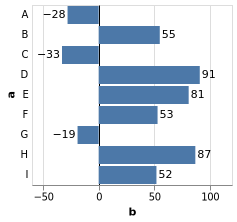Please:
- [x] Check for duplicate issues. Please file separate requests as separate issues.
- [x] Describe how to reproduce the bug.
- [x] Use the latest versions of Vega and Vega-Lite. - using latest version of altair
- [x] Provide an minimal, reproducible example spec in JSON, wrapped by triple backticks like this:
{
"$schema": "https://vega.github.io/schema/vega-lite/v4.17.0.json",
"data": {"name": "data-0c37a591ceae41251602063922514f84"},
"datasets": {
"data-0c37a591ceae41251602063922514f84": [
{
"day": "2022-04-01T00:00:00",
"metric": "Nodulation of legumes",
"sample": "Arch Field: Hedge",
"value_float": 0.5
},
{
"day": "2022-07-27T00:00:00",
"metric": "Nodulation of legumes",
"sample": "Arch Field: Hedge",
"value_float": 0.5
}
]
},
"layer": [
{
"encoding": {
"detail": {"field": "sample", "type": "nominal"},
"opacity": {
"condition": {"selection": "selector001", "value": 1},
"value": 0.1
},
"x": {
"axis": {"format": "%b %d", "title": null},
"field": "day",
"type": "temporal"
},
"y": {
"axis": {"title": "Nodulation of legumes"},
"field": "value_float",
"scale": {"zero": false},
"type": "quantitative"
}
},
"mark": "line",
"selection": {
"selector001": {
"bind": "legend",
"fields": ["sample"],
"toggle": "true",
"type": "multi"
}
}
},
{
"encoding": {
"color": {"field": "sample", "type": "nominal"},
"detail": {"field": "sample", "type": "nominal"},
"opacity": {
"condition": {"selection": "selector001", "value": 1},
"value": 0.1
},
"tooltip": [
{"field": "sample", "title": "Soil sample", "type": "nominal"},
{"field": "day", "title": "Date", "type": "temporal"},
{"field": "value_float", "title": "Value", "type": "quantitative"}
],
"x": {"field": "day", "type": "temporal"},
"y": {
"field": "value_float",
"scale": {"zero": false},
"type": "quantitative"
}
},
"mark": {"opacity": 1, "size": 50, "type": "circle"}
}
],
"title": "",
"width": "container"
}
Hello! I have found some strange behaviour when representing a small dataset that includes a single data entry with a decimal point value. Here is a simplified version of the code I have to reproduce the bug:
def get_chart(df, dt_format, y_title):
chart_base = alt.Chart(df)
line_chart = chart_base.mark_line().encode(
x=alt.X("day", axis=alt.Axis(title=None, format=dt_format)),
y=alt.Y(
"value_float",
axis=alt.Axis(title=y_title),
scale=alt.Scale(zero=False),
),
)
chart = alt.layer(line_chart).properties(width="container", title="")
return chart.to_json()
The df is:
day metric sample value_float
0 2022-04-01 Nodulation of legumes Arch Field: Hedge 0.5
1 2022-07-27 Nodulation of legumes Arch Field: Hedge 0.5
And the chart looks like this:

I would expect the scale on the y axis to be labeled 0.5 rather than 1!
If we try the same code with a slightly bigger dataset, it works as expected.
df
day metric sample value_float
0 2022-05-06 Nodulation of legumes Mud Mead: Sample 1 1.5
1 2022-07-29 Nodulation of legumes Mud Mead: Sample 1 0.5
2 2022-08-12 Nodulation of legumes Mud Mead: Sample 1 0.5
3 2022-09-28 Nodulation of legumes Mud Mead: Sample 1 1.5
4 2022-11-28 Nodulation of legumes Mud Mead: Sample 1 1.5

I'm not sure if it's relevant to the issue, but I am using a django template the display the chart. Here is the code from the template in case it is relevant:
<div id="chart" class="vega-plot col-12"></div>
<script type="text/javascript">
window.addEventListener('DOMContentLoaded', function() {
vegaEmbed('#chart', {{ chart|safe }}, {renderer: 'svg'})
})
</script>
Where chart is the chart.to_json() returned above.
Thanks for your help! Let me know if you need any more information.
- [] If applicable, include error messages and screenshots, GIF videos (e.g. using https://www.cockos.com/licecap/), or working examples (e.g. by clicking share in the Vega-Editor or https://bit.ly/vega-lite-blocks)
Bug :bug:


















